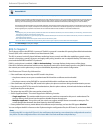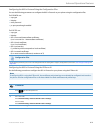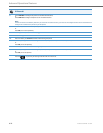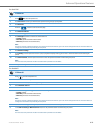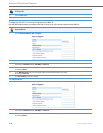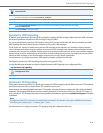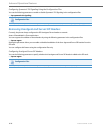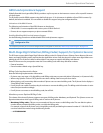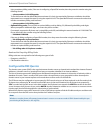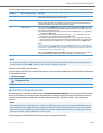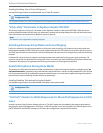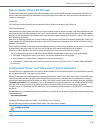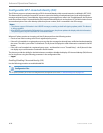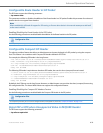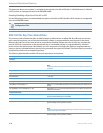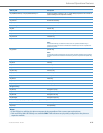
Advanced Operational Features
6-28 41-001343-02 REV04 – 05.2014
Using mandatory billing codes, if the user is configuring a Speed Dial number, then they enter the number using the
following format:
– <phonenumber>%23<billingcode>
To use this format with the default dial plan terminator (#), the # sign required by Sylantro as a delimiter should be
represented as an escaped character by using the sequence %23. The speed dial format for an external number that
includes a mandatory billing code becomes:
– <phonenumber>%23<billing code>
• Optional billing codes: The user dials an optional billing code by dialing *50, followed by the billing code digits.
When prompted for additional digits, user enters the phone number.
For example, suppose the IP phone user is using billing code 500, and dialing the external number 617-238-5000. The
IP user then enters the number using the following format:
– *50500#6172385000
If the user is dialing configuring a Speed Dial number, then they enter the number using the following format:
– *50<billingcode>#<phonenumber>
To use this format with the default dial plan terminator (#), the # sign required by Sylantro as a delimiter should be
represented as an escaped character by using the sequence %23. The speed dial format for an external number that
includes an optional billing code becomes:
– *50<billing code>%23<phone number>
Numbers Not Requiring Billing Codes
Billing codes are not required for the following two types of calls:
• Emergency calls (E911)
• Calls between extensions
Configurable DNS Queries
The domain name system (DNS) is the way that Internet domain names are located and translated into Internet Protocol
addresses. A domain name is a meaningful and easy-to remember identifier for an Internet address.
The lists of domain names and IP addresses are distributed throughout the Internet in a hierarchy of authority within a
database of records. There is usually a DNS server within close proximity to your geographic location that maps the
domain names in your Internet requests or forwards them to other servers in the Internet.
The IP Phones may be configured to issue requests for DNS records using one of three methods. In the first method, the
IP phones issue requests for “A” records from the DNS server. In the second method, the IP phones issue requests for
“SRV” records from the DNS server. In the third method, the IP phones issue requests for NAPTR records from the DNS
server. However, the IP phones do not use the NAPTR record to determine whether to use a secure or unsecure commu-
nication path (see the following table for a description of each method).
When the IP phone accesses the IP network, it issues a DNS lookup request to find the IP address and port and then waits
for a response from the DNS service that provides the IP address and port.
Note:
Whether or not the phone will operate/communicate in a secure or unsecure mode is ONLY determined by the pre-
provisioning of the phone (i.e. the .cfg file).



